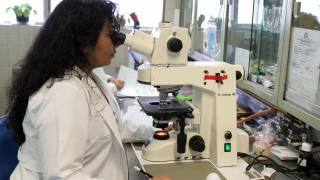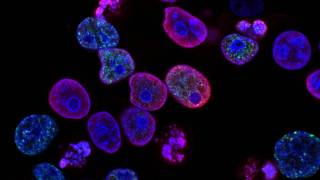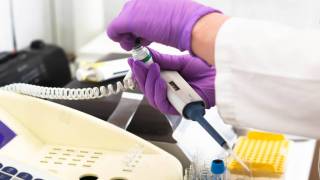Cervical Cancer Co-Testing is Best

A study from researchers provides new evidence that Human Papillomavirus (HPV) screening test is significantly less likely to detect cervical cancer and precancer than co-testing, a method that combines HPV and the Papanicolaou test (Pap) by liquid-based cytology testing using the same specimen.
The Health Trends™ study published on July 8, 2020, is significant because it is the largest to date to assess the performance of guideline-recommended cervical cancer screening methods in a diverse population of American women in real-world care settings.
Produced by Quest Diagnostics and the University of Pittsburgh Medical Center (UPMC), the study reveals stark differences in the performance of the various recommended methods in detecting cancer and precancers in women, who are 30 years of age and older.
HPV testing identifies the genetic material of the HPV, which can cause cervical cancer, while Pap identifies cellular changes on the cervix that may be or become cancer.
Published online today in the American Journal of Clinical Pathology, the peer-reviewed study assesses sensitivity rates of HPV alone, Pap alone, and co-testing (HPV and Pap testing together) in detecting cancer and precancer of the cervix in nearly 19 million de-identified co-test results performed by Quest Diagnostics on behalf of 13.6 million women in the United States from 2010 to 2018.
Of these cases, 1,259 were diagnosed with cervical cancer, which is 2x the number of diagnosed cancer cases as the next largest study.
"This Health Trends analysis should put to rest any notion that HPV alone achieves the same bar for quality cancer screening," said R. Marshall Austin, M.D., Ph.D., Emeritus Professor of Pathology, UPMC, in an edited press statement.
The United States Preventive Services Task Force (USPSTF) recommends screening in women 30-65 years of age every three years with Pap, every 5-years with co-testing or every five years with primary HPV testing.
Among this study’s key findings:
- HPV and Pap testing alone fails to detect twice as many women who develop cervical cancer as co-testing.
- Of 1,615 co-tests taken at any time prior to a cancer diagnosis, 86.9 percent were positive by co-testing, a non-detection rate (also known as false negative) of about 13.1 percent.
- By comparison, Pap and HPV testing alone had non-detection rates nearly twice as high: Pap at 26.4 percent and HPV at 28.4 percent.
- Co-testing detected significantly more women who developed biopsy-confirmed adenocarcinomas, a typically aggressive form of cervical cancer, identifying 82.3 percent of this cancer compared to only 61.2 percent by HPV and 59.7 percent by Pap.
According to a report published in January 2020 by the American Cancer Society, cervical cancer is the second leading cause of cancer death nationally in women 20-39 years of age, causing 10 premature deaths per week in this age group.
"While widespread screening has helped cut cervical cancer mortality by three fourths in the past 80 years, this disease is still far too common," said co-author Harvey W. Kaufman, M.D., Senior Medical Director and Director, Health Trends Research Program, Quest Diagnostics.
"Because most cervical cancers develop in the absence of regular screening, ensuring women have access to the most reliable screening method, co-testing, when they are screened is an essential step in lowering mortality from this disease."
The new findings confirm previous Quest Diagnostics research published in Cancer Cytopathology in 2015, a journal of the American Cancer Society, which found HPV-only cervical screening would not have detected approximately 19 percent of 526 women who developed confirmed cervical cancer.
An analysis of data from Magee-Women's Hospital (MWH) of the University of Pittsburgh Medical Center (UPMC) reported a higher percentage of positive Pap than HPV tests among 109 co-testing results within 12 months from cancer diagnosis, similar to the present Quest Diagnostics Health Trends study.
By comparison, analysis of a regional dataset from Kaiser Permanente Northern California (KPNC) also found that co-testing outperformed other methods, but the authors of that study concluded that "the contribution of cytology to screening is shown to be very small."
The KPNC data were also limited in its ability to identify cytological abnormalities associated with confirmed adenocarcinomas, aggressive cancer, as compared to the Quest and MWH data.
"It is important to reconcile the similar conclusions of Quest Diagnostics and Magee-Women's Hospital with the different findings of Kaiser Permanente in Northern California," said Lee H. Hilborne, MD, Professor of Pathology and Laboratory Medicine at UCLA, Senior Medical Director, Quest Diagnostics.
"KPNC has an exemplary care model, but this very strength may limit the usefulness of KPNC data for drawing conclusions about the real-world care experience of most American women who receive care in less integrated practice settings."
"For women who may otherwise not be screened at all, there is no question that cytology or HPV primary are useful screening technologies," said Damian P. Alagia, III, MD, Senior Medical Director of Woman's Health for Quest Diagnostics.
"Yet, that should not obscure the fact that co-testing is fundamentally the better screening option for women and is widely available in the U.S."
Quest Diagnostics Health Trends™ is a series of scientific reports that provide insights into health topics.
Vax-Before-Cancer publishes HPV testing news.
Our Trust Standards: Medical Advisory Committee

























